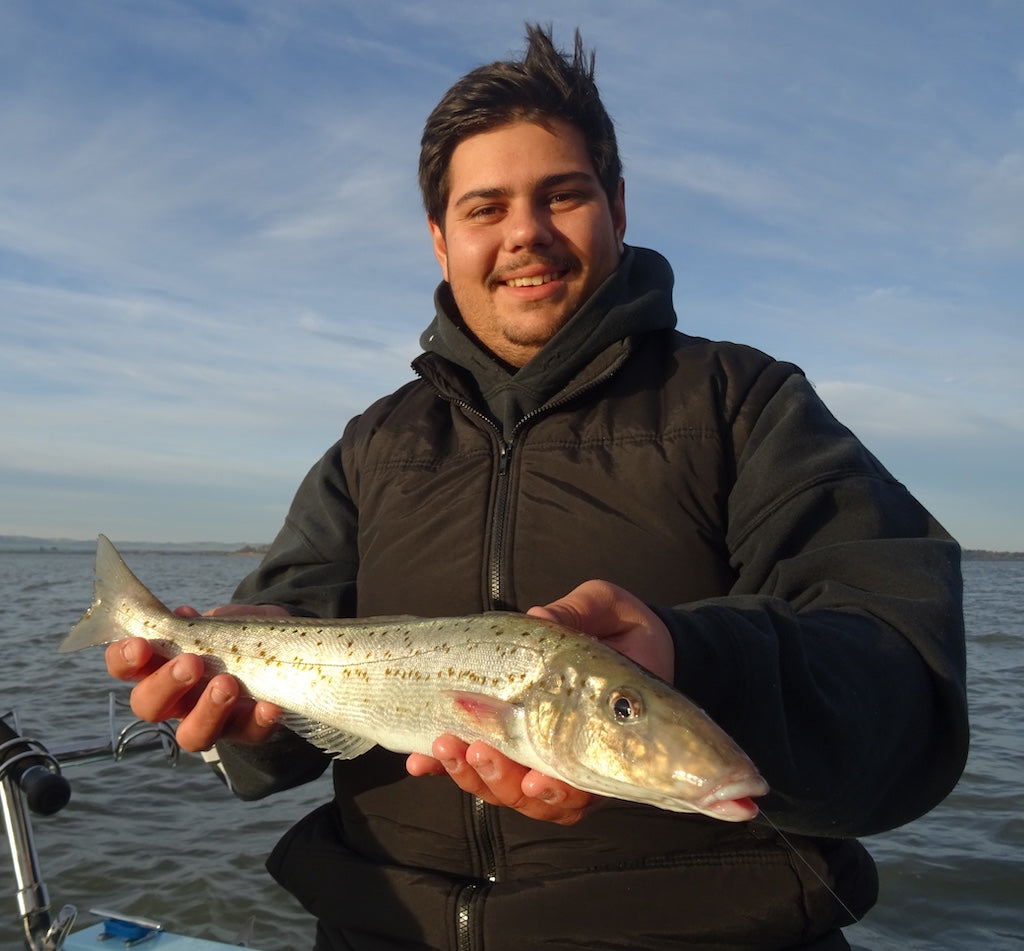How To Catch King George Whiting in Port Phillip Bay
By Jesse Rotin
These spotted wrigglers have a number of different names like Tings, KGWs, Elbow Slappers and if they’re big enough, Kidney Slappers. No matter what you call them, whiting are tasty and offer plenty of light tackle action. KGW’s can be found around the entire shoreline of Port Phillip Bay, however making your way down to the entrance, you’ll notice that the tidal flow is much stronger and therefore a slightly different approach is needed.
When
Although thestrength of tidal flow may vary across locations, tide is still important and fishing while it is flowing will be most productive. Whiting love shallow water, however at times they can be a little shy and need a bit of cover. Cover could consist of slightly discoloured water, low light periods or even wind chop on the surface of the water.KGWs can be caught all year in the bay but spring through to autumn certainly brings the largest numbers.

Where
KGW’s predominately feed in schools over broken ground, especially sand patches within the weed searching for Sandworms, Crustaceans and Molluscs.The depths at which Whiting will venture are endless but the best captures seem to take place in 2-6m of water. Once a location is chosen, start by spanning your cast around the area until you get a hit. It’s crucial to remember where you got the strike as Whiting won’t venture far, and getting it back in the same spot will generally lead to another bite.
Bait
Mussels, tenderized Squid, Pippies and small fillets of Pilchard can all be used to entice KGW’s. Pippies are a favourite bait of mine as they release plenty of scent,are easy to open and very accessible to purchase. These baits will work throughout the bay; however the Southern end tends to have species like Leather Jackets and Puffer fish. In this case, tough baits like squid can help make your bait last longer.
Tackle
The extended paternoster and the simple running sinker rig are the two most commonset-ups used on Whiting. Both rigs give the bait freedom to waft around looking natural,with the only major differencebeing the size of the sinker needed to hold your bait to the bottom. There is an array of hooks which can be used but I guess the most important thing is to keep the size small to match the mouths of Tings. Whiting are quite crafty and can inhale and strip bait off a hook in the blink of an eye. Using light tackle allows these sneaks to slip up, giving anglers the chance to catch them in the act. Light rods are important as their soft action will allow Whiting to engulf the bait without it being ripped from their mouths.
Gear
*TD Hyper 763LXS/TD Exceler 2500D (6-8ft and 1-2 or 2-4kg rods)
*8lb J-Braid Grand or 6lb J-Thread Nylon
*8-12lb J-Thread Fluorocarbon (up to 1m of leader)
*Size 6-8 Baitholder or size 1 Circle hooks
*Size 4-8 Swivels
*00-2 Ball sinker / 1/4-2oz Bomb sinker
*Red Tube (works as an attractor, plus offers protection to your leader above the
*hook from toothy species)
*Spare rigs

Hotspots
Boat (North)
* Green Point, Brighton
* Point Cook Cardinal Beacon
* Wedge Spit, Werribee
* Wilson Spit, Point Wilson
Boat (South)
* Oliver’s Hill, Frankston
* Point Richards, Portarlington
* Coles Channel, St Leonards
* Rye Grass beds
Landbased (North)
* Brighton/Sandringham Break walls
*Beaumaris Yacht Squadron Jetty
*Werribee Harbour Breakwall
Landbased (South)
* Limeburners Point Boat Ramp
* Rippleside Jetty, Geelong
*St Leonards Pier
Lastly
Getting snagged isinevitable when fishing around reef. Therefore, keeping extra rigs are vital as Whiting are attracted to action and if the action stops while you’re taking the time to tie a new rig, so will they.


